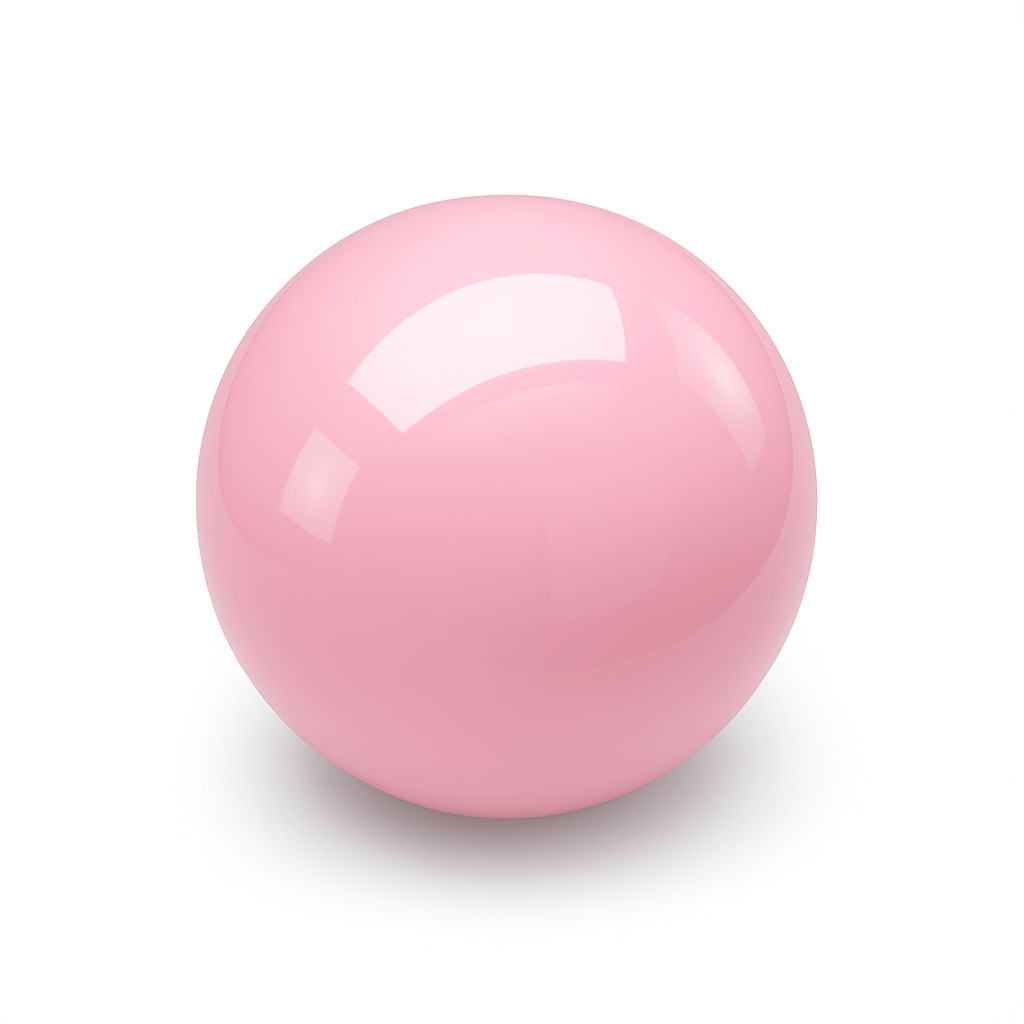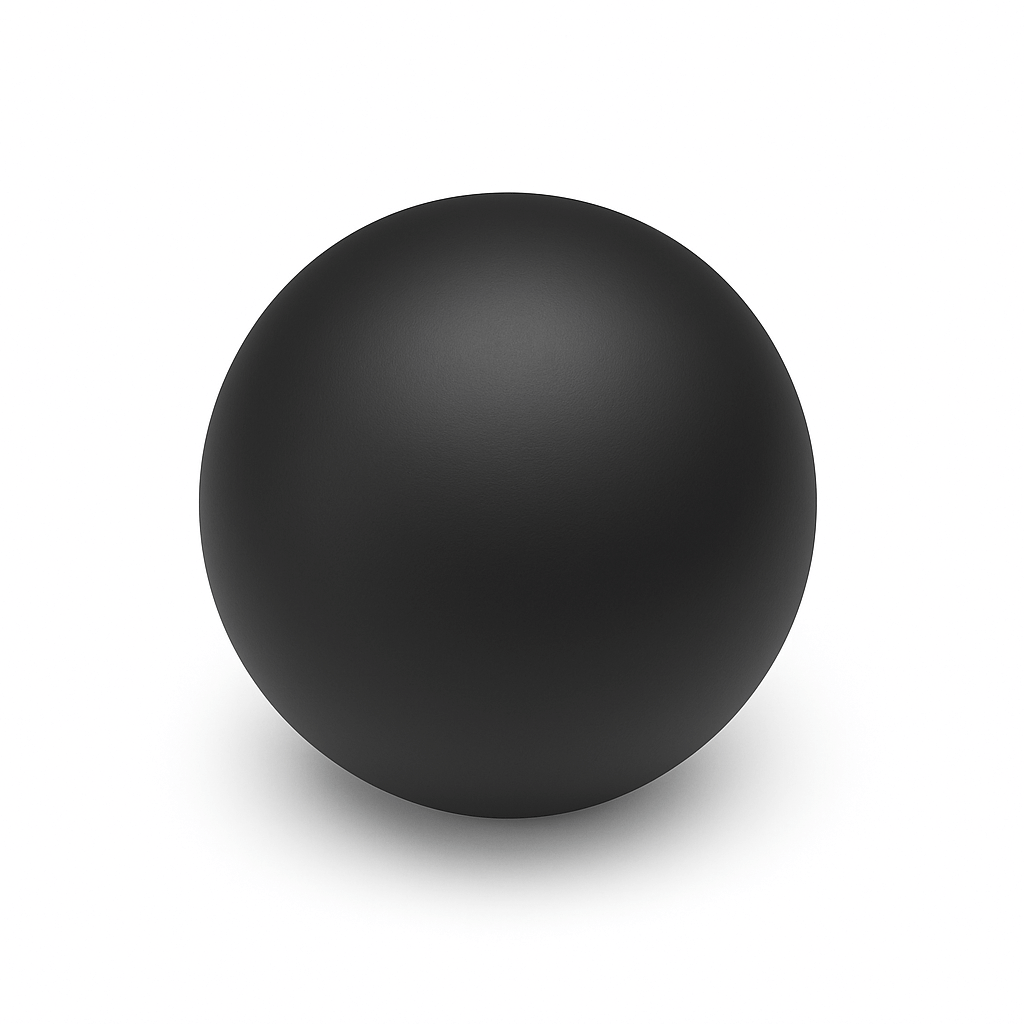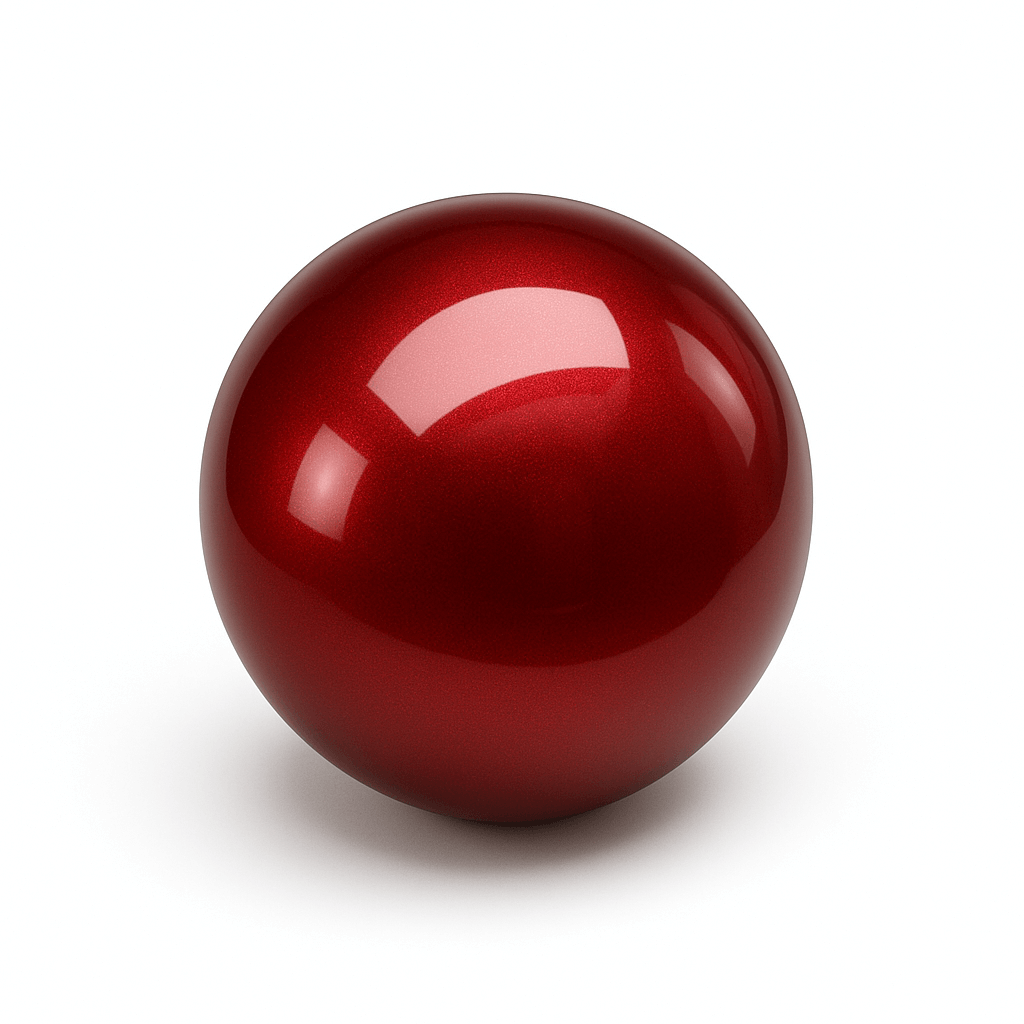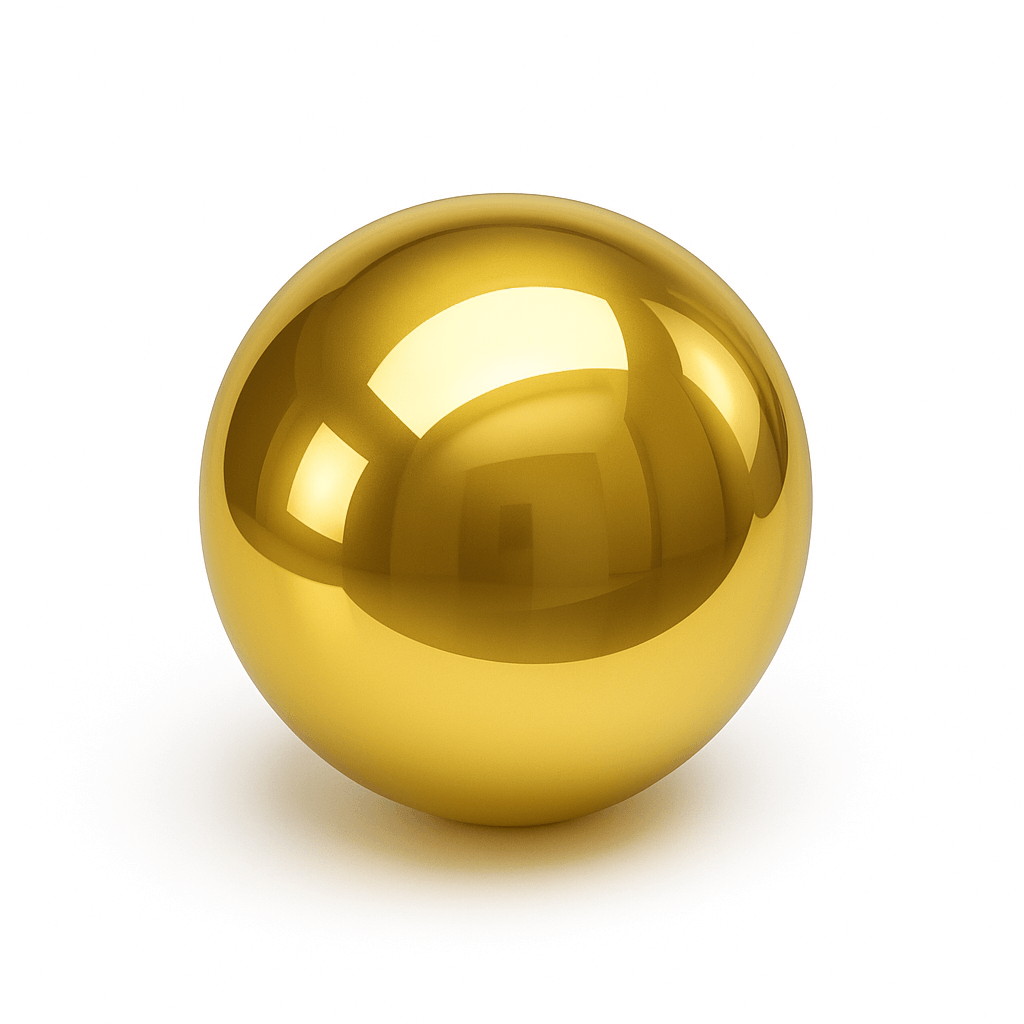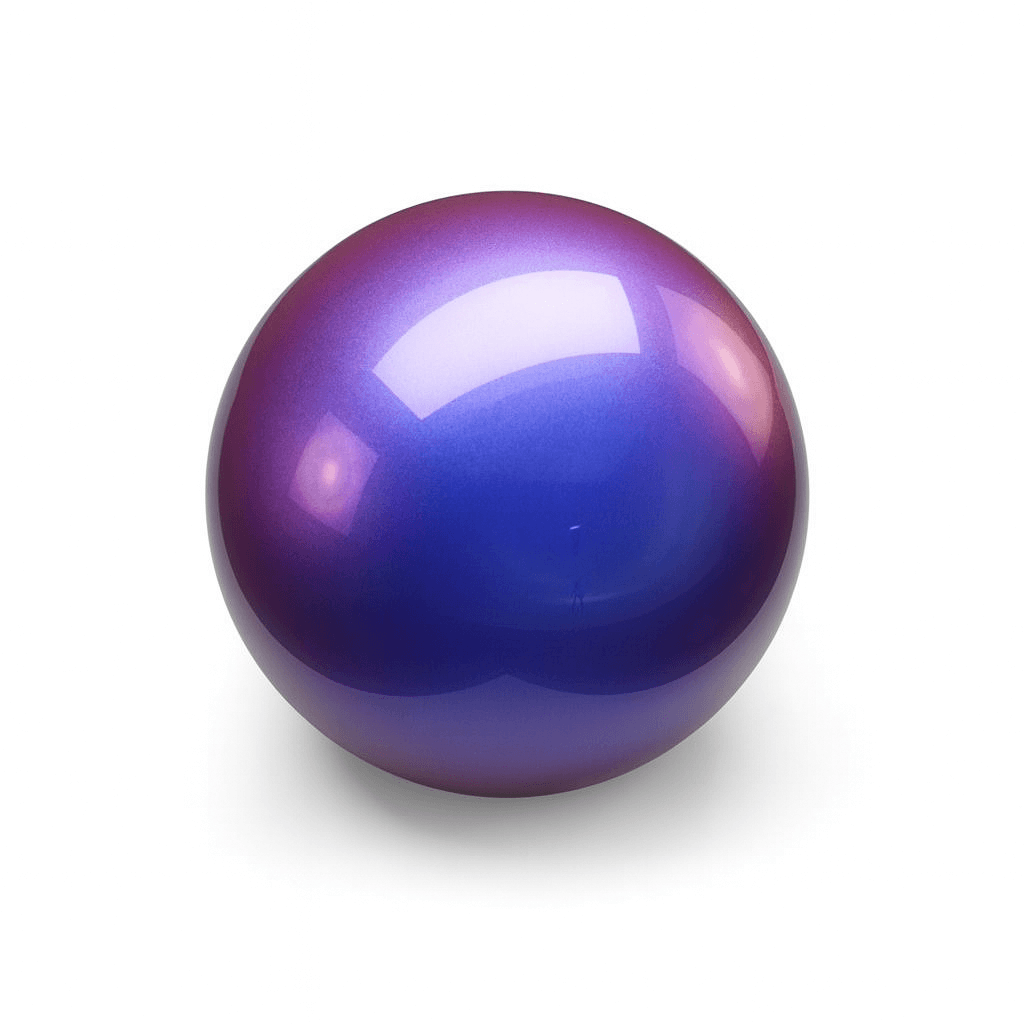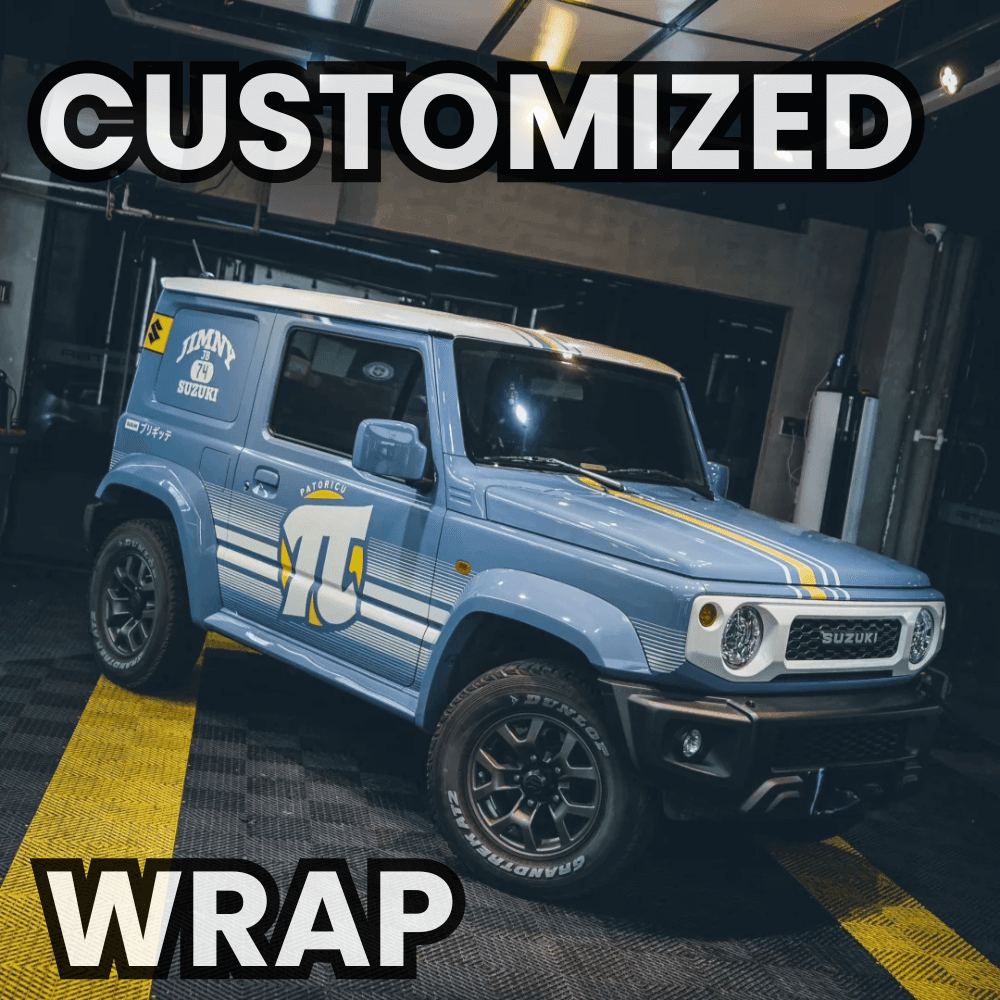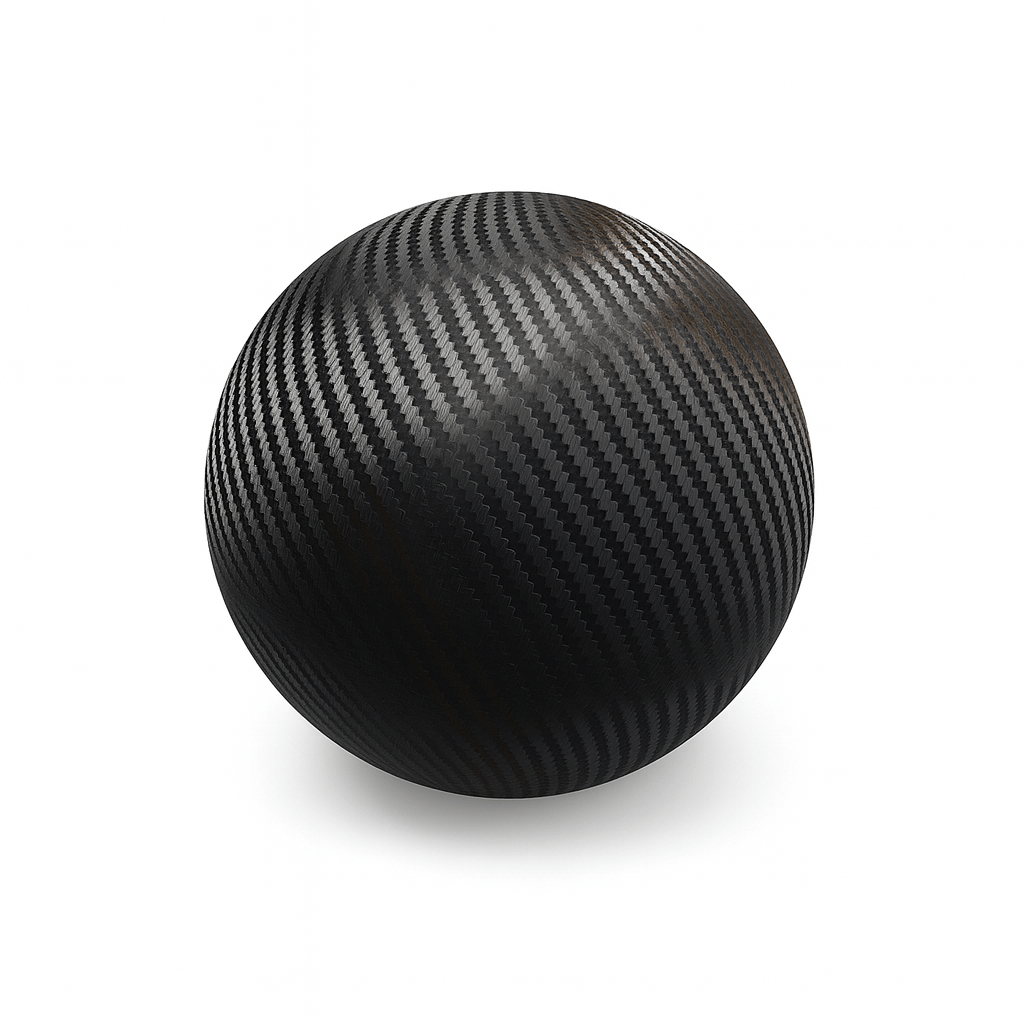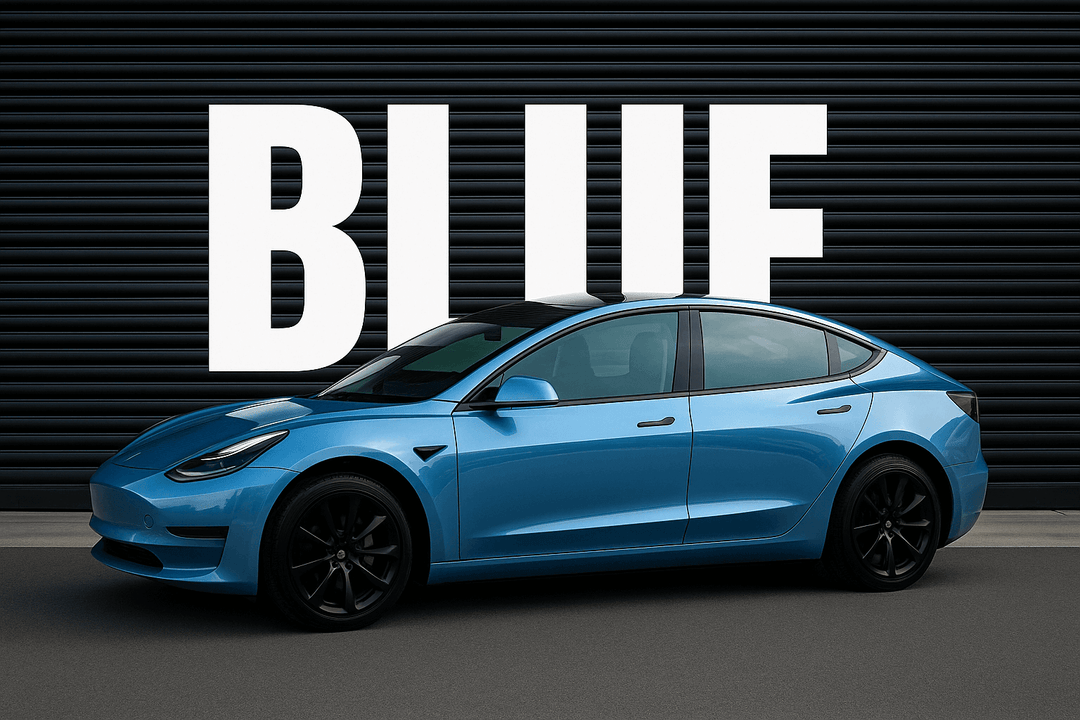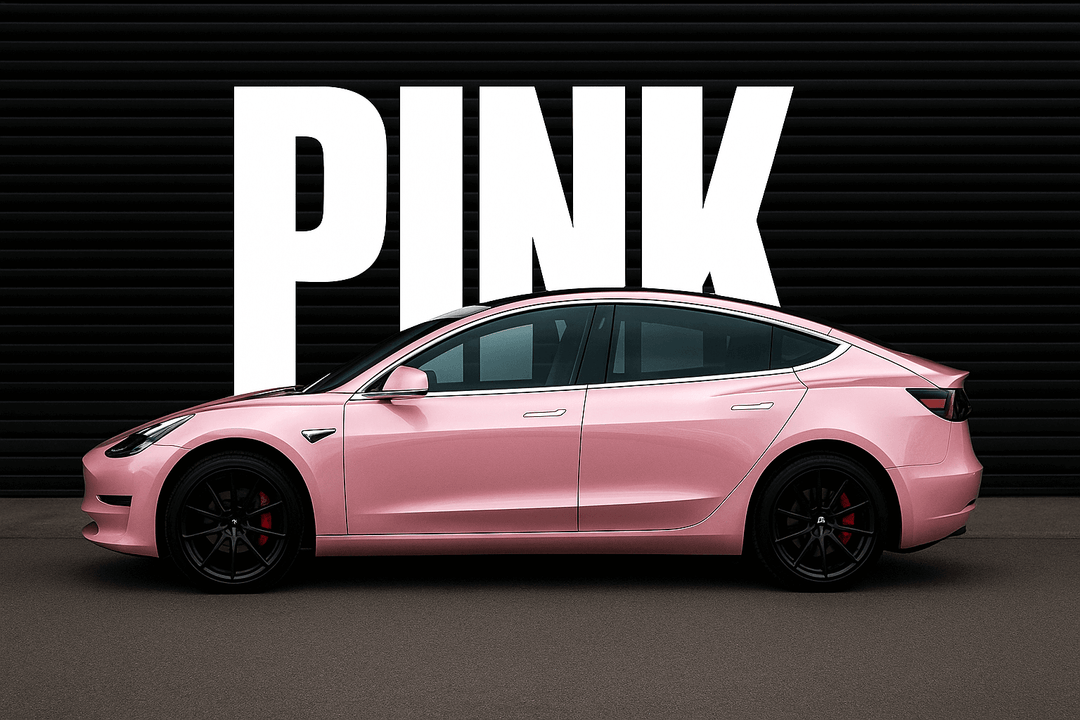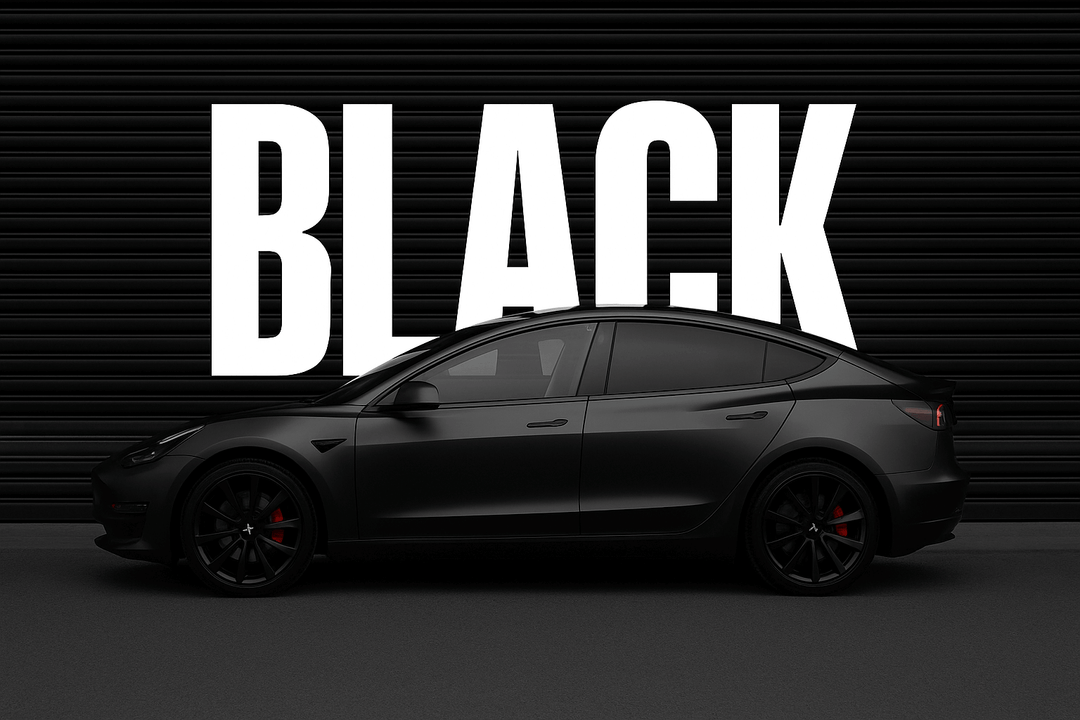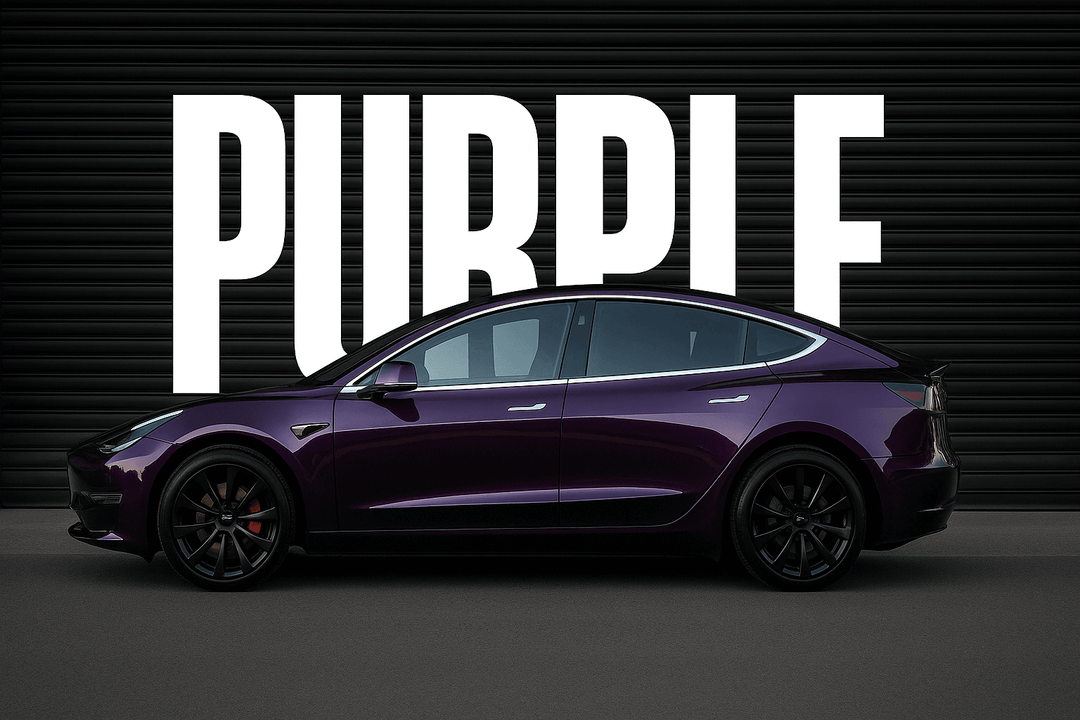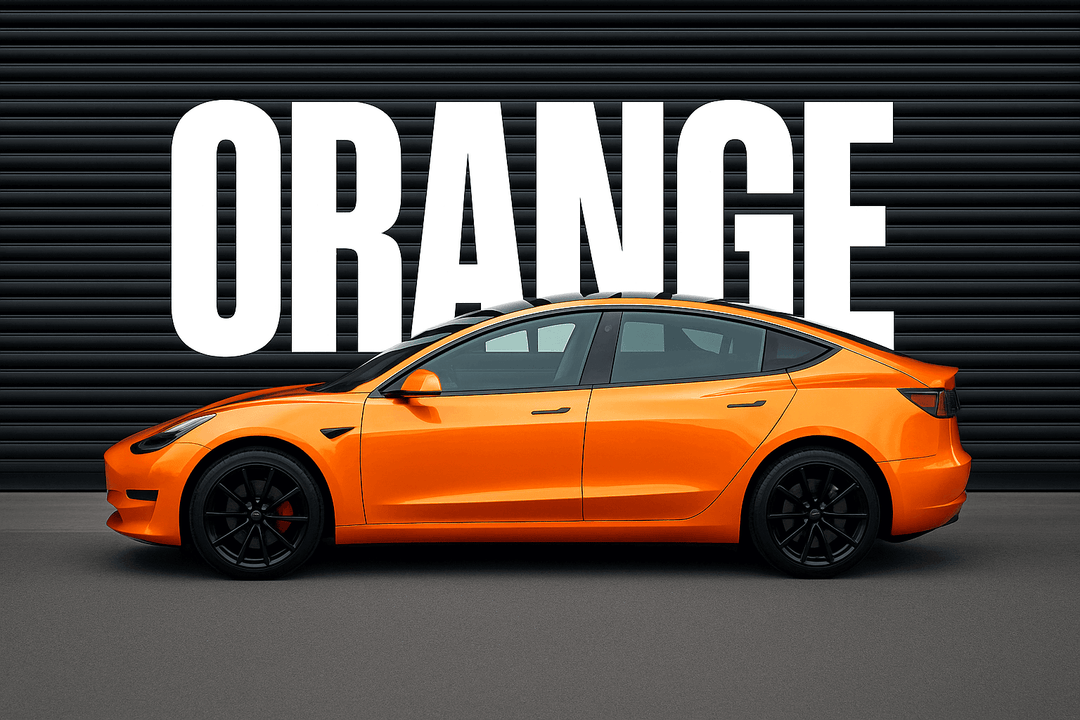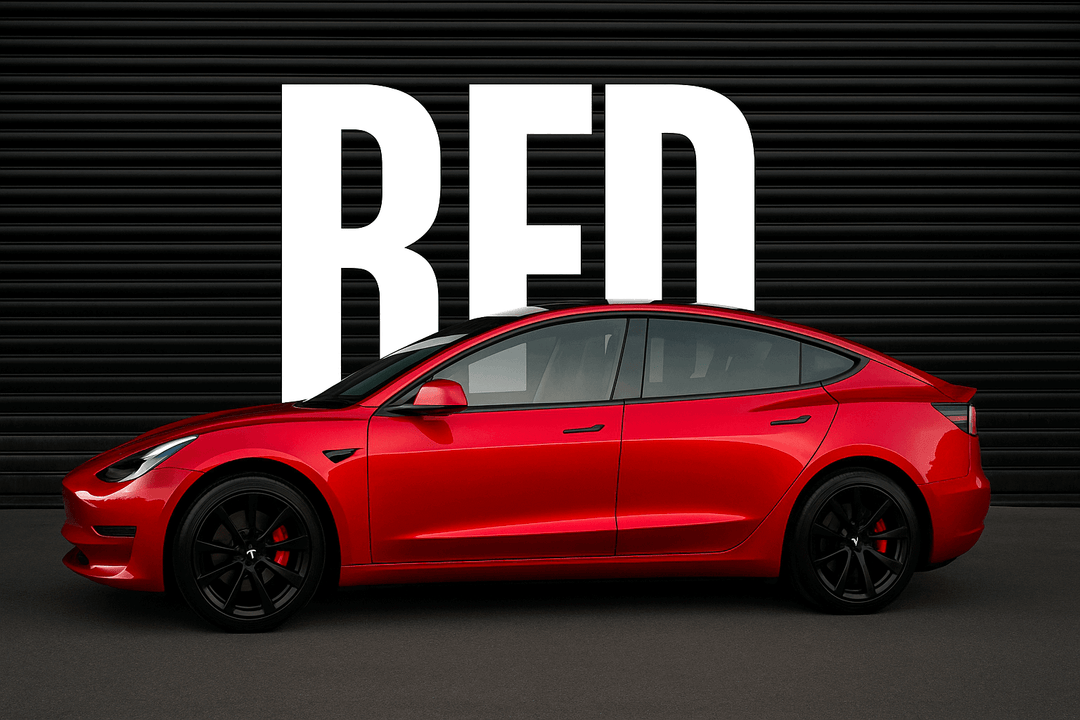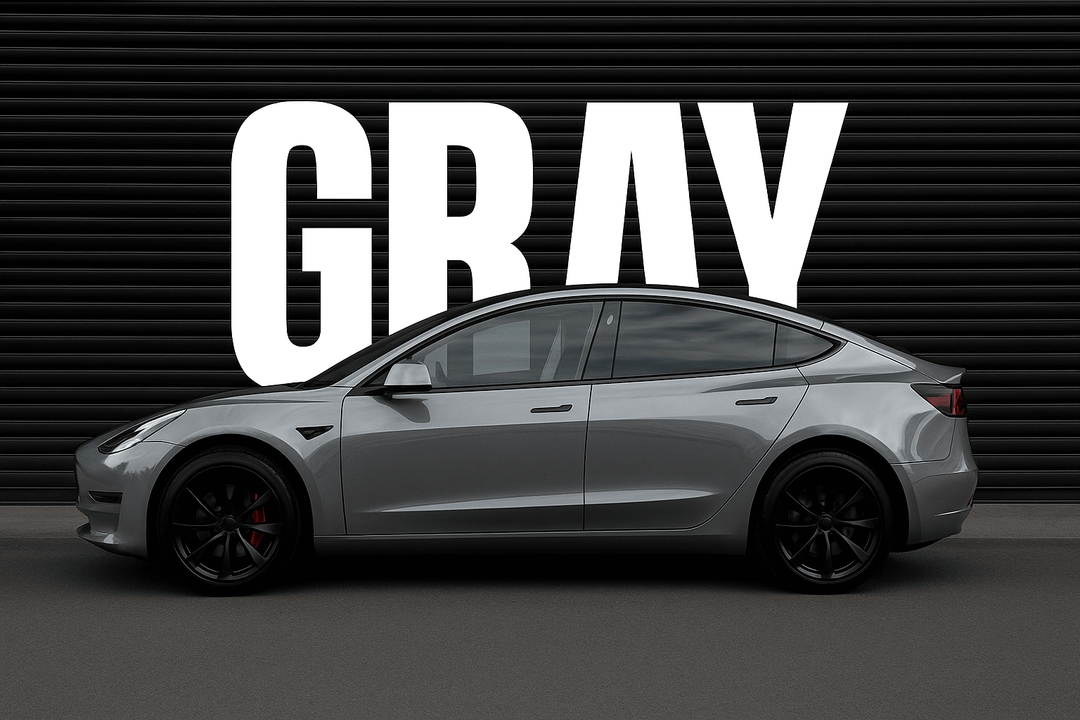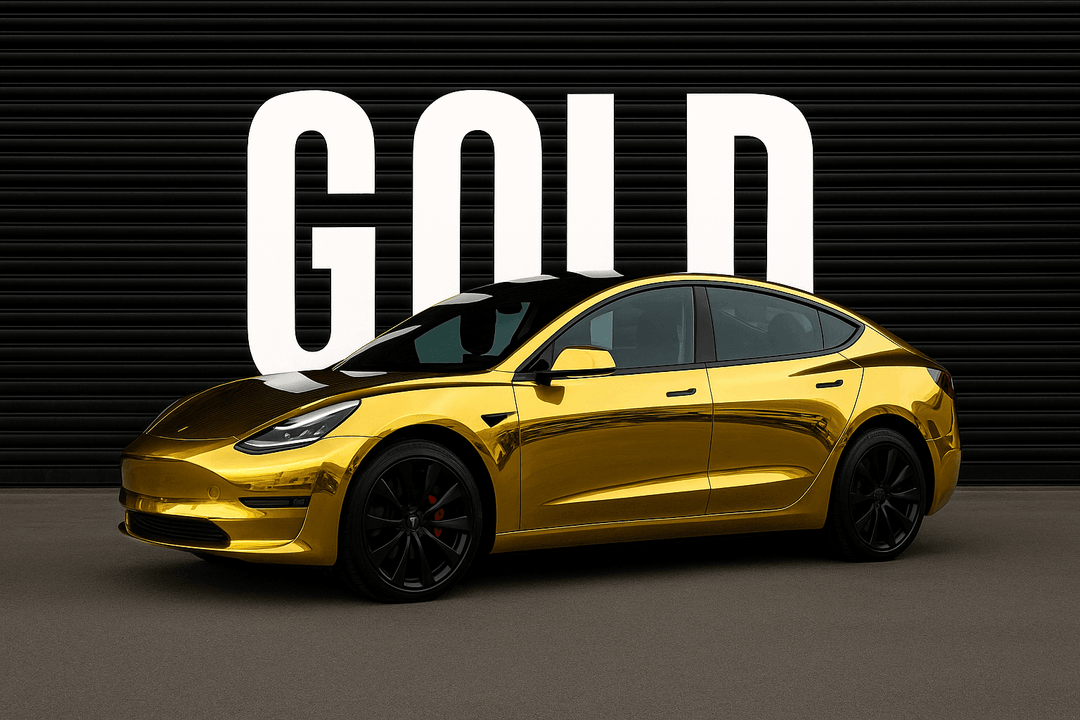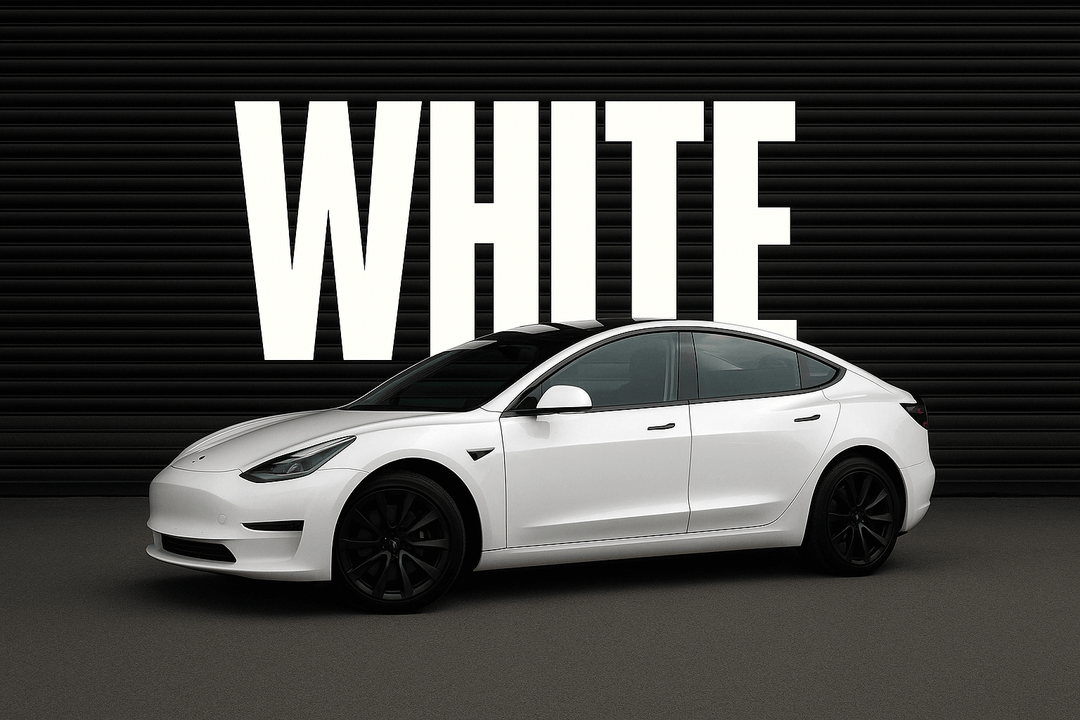The Ultimate Guide to Colored PPF
What if you could shield your car’s paint from rock chips, scratches, and sun damage—while also giving it a stunning new look? Colored Paint Protection Film (PPF) makes that possible. Once limited to transparent, nearly invisible films designed solely for paint preservation, PPF has evolved into something far more versatile. Now, you don’t have to choose between protection and personalization—you can have both in a single application.
Colored PPF is a high-performance polyurethane film that combines the benefits of traditional clear PPF with the visual appeal of a custom color or finish. It not only forms a durable barrier against daily wear, such as UV rays, stone chips, and chemical contaminants, but also transforms your car’s appearance, offering everything from sleek matte blacks to vibrant gloss finishes and even chrome or carbon fiber textures.
Whether you're a car enthusiast looking to make a bold statement, a detailer seeking to elevate your service offerings, or a shop owner exploring premium upgrades for clients, colored PPF is a smart, stylish solution. In this guide, we’ll explore the core advantages of colored PPF, walk through the various finishes available, compare it to other wrap and protection options, and help you choose the right film for your needs.
What is Colored PPF?
Colored PPF (Colored Paint Protection Film) is a transparent protective film infused with pigments or special finishes to give it color or texture. Like standard clear PPF, it’s made from TPU (thermoplastic polyurethane), a tough, flexible material known for its self-healing topcoat and resistance to UV exposure and yellowing.
When applied to a vehicle’s painted surfaces, colored PPF forms a sacrificial shield that absorbs scratches, rock chips, bug splatter, and other hazards, preserving the factory paint beneath. The big difference is that, unlike clear film, colored PPF isn’t invisible – it adds a new color or finish to your car, transforming its appearance while it protects.
In essence, colored PPF offers the same level of paint protection as clear PPF, but with a cosmetic twist. Yeswrap’s color PPF comes in various shades and styles (from solid colors to metallic and even patterns), allowing you to customize your vehicle’s look without a permanent repaint. This dual benefit has earned colored PPF nicknames like “cosmetic PPF” or “fashion PPF,” as it merges protective function with fashion-forward form.
Colored PPF vs. Vinyl Wrap: What’s Different?
At first glance, colored paint protection film (PPF) and vinyl wraps might seem similar—they both offer a way to change your car’s appearance without repainting. However, when it comes to purpose, performance, and longevity, these two products are fundamentally different.
1. Protection vs. Decoration
The most important difference lies in function. Vinyl wraps are cosmetic. They’re primarily designed to restyle your vehicle and offer limited protection from surface-level wear. Colored PPF, on the other hand, is built for protection first, with color or finish added as a secondary benefit. It’s engineered to absorb impact, resist abrasion, and shield paint from harsh elements like rock chips, UV rays, bird droppings, and bug splatter.
2. Thickness and Durability
Colored PPF is made from thicker thermoplastic polyurethane (TPU), typically 6–8 mils thick. This additional thickness makes it much more effective at withstanding physical impacts compared to thinner vinyl films. PPF is designed to last 7–10 years with proper care, while most vinyl wraps begin to degrade after 3–5 years, especially under constant sun exposure or harsh conditions.
3. Self-Healing Technology
One of the standout features of colored PPF is its self-healing topcoat. Minor swirl marks and scratches can vanish with heat from the sun or warm water, restoring a smooth, like-new finish. Vinyl wraps do not self-heal; once scratched or scuffed, the damage is permanent unless you replace the affected panel.
4. Water and Chemical Resistance
Many premium colored PPF products are coated with hydrophobic layers that repel water and resist chemical stains. This makes washing and maintenance much easier. Vinyl wraps lack this level of surface protection and can become stained or faded more easily over time.
5. Installation and Finish Quality
While both products benefit from professional installation, PPF requires more technical skill due to its thickness, stretchability, and adhesive properties. A properly installed colored PPF will look seamless and last longer, but it takes more time and experience to apply. Vinyl is easier to install and reposition, making it more DIY-friendly—but also more prone to lifting, bubbling, or edge failure over time.
6. Color Variety and Appearance
Vinyl wraps offer more extensive design options, including printed graphics, brushed metal textures, and specialty finishes like color-shift or camo. While colored PPFs are growing in variety, they currently focus on clean, elegant finishes like gloss, matte, satin, carbon fiber, and chrome. If you’re looking for wild prints or complex patterns, vinyl is still the more flexible medium.
However, colored PPF excels in a paint-like finish, offering a deeper, richer color that mimics real paint better than vinyl.
7. Cost and Value
Colored PPF typically comes at a higher price point than vinyl wrap, both in terms of material and installation labor. But the added value comes from its dual role—it’s both a protective layer and a color upgrade. With PPF, you’re paying for years of paint protection, not just a temporary style change.
Vinyl is a great budget-friendly way to change color, but it won’t prevent chips or environmental damage the way PPF can.
Colored PPF vs. Clear PPF: What’s the Difference?
Both colored and clear paint protection films (PPF) are designed to do the same core job—protect your vehicle’s paint from everyday hazards like rock chips, scratches, UV exposure, bird droppings, and environmental contaminants. However, they serve different purposes when it comes to appearance and customization.
Clear PPF – Invisible Protection for a Factory Look
Clear PPF is ideal if you want to keep your car’s original paint visible while adding a durable, transparent shield over it. When professionally applied, clear PPF is virtually invisible, allowing the OEM color and finish to remain unchanged. This makes it especially popular among owners of luxury, performance, or classic cars who want long-term protection without altering the vehicle’s appearance.
Clear PPF is also known for being low-maintenance and discreet. Minor imperfections such as swirl marks or light yellowing over time are hard to detect, preserving a clean, factory-fresh look even after years of use. If your goal is to protect your vehicle's factory paint while keeping the stock aesthetic intact, clear film is the go-to option.
Colored PPF – Protection with a Personalized Finish
Colored PPF, on the other hand, combines the same protective qualities with the added benefit of visual customization. It introduces a tinted or fully opaque layer over your vehicle’s paint, allowing you to change the look of your car while protecting it at the same time. Options range from sleek solid colors to bold finishes like matte, satin, carbon fiber, or chrome.
Whether you want to enhance your car’s existing color or completely transform it, colored PPF gives you that flexibility. It’s a popular choice for restyling projects, brand promotions, or enthusiasts who want a standout finish with the security of paint protection.
That said, colored PPF may require more visual upkeep. While it still offers self-healing and stain resistance, any damage or aging to the film may be more noticeable, especially if scratches impact the surface color or reveal small areas of the original paint beneath.
Maintenance Considerations
Both clear and colored PPF are relatively easy to clean and maintain. However, colored PPF may demand slightly more attention to preserve its color vibrancy and finish quality, especially in matte or chrome variants, which require specific cleaning products. Regular hand washing, prompt removal of contaminants, and the optional use of PPF-safe ceramic coatings will help extend the life of either film.
Why Choose Colored PPF? A Multitude of Benefits
Choosing Colored Paint Protection Film (PPF) goes beyond just adding a new look to your vehicle. It brings together the best of two worlds—robust protection and customized styling—in one advanced solution. Whether you're a car enthusiast, a detailer, or a shop owner offering high-end services, here are the top reasons why colored PPF stands out as a smart investment:
1. Robust Paint Protection
At its core, colored PPF functions just like traditional clear PPF. It's designed to shield your vehicle’s paint from everyday hazards such as rock chips, scratches, road debris, insect splatter, bird droppings, and UV rays. The film acts as a durable, sacrificial layer that absorbs impacts and surface damage, keeping your original paint intact underneath.
Yeswrap’s premium colored PPF products feature self-healing topcoats that erase fine scratches with the help of heat, from sunlight or warm water, so your car maintains a flawless finish over time. Additionally, these films are often UV-resistant and stain-resistant, helping prevent discoloration, fading, or yellowing, even in harsh climates.
2. Personalized Style and Aesthetic Restyling
One of the most exciting advantages of colored PPF is its ability to transform your vehicle’s appearance while protecting it. With a wide range of colors, shades, and textures, you can go for anything from a subtle OEM-style tint to a completely bold and head-turning transformation.
Whether you want a deep gloss black, a frozen matte gray, or a carbon fiber finish, colored PPF gives you that level of control. Unlike traditional paint jobs, this restyling option is completely reversible. You can remove the film at any time to reveal the pristine paint beneath or update the look again when your style changes. It’s the ideal solution for leases, rotating show cars, or owners who simply enjoy keeping their car’s look fresh and modern.
3. Variety of Finish Options for Enhanced Aesthetics
Color is only one part of the visual equation. Our Tinted PPF also comes in multiple finish types, including gloss, matte, satin, chrome, carbon fiber, and more for your options, each with a distinct aesthetic impact.
-
Gloss highlights curves and reflections for a deep, shiny appearance.
-
Matte offers a stealthy, flat finish with a modern, edgy feel.
-
Satin blends the two, creating a low-sheen, soft-touch appearance.
-
Chrome and carbon fiber textures add unique flair, like a mirror-like shine or patterned visual effects.
4. Self-Healing Technology
Unlike traditional wraps or paint, colored PPF is equipped with a self-healing surface layer. When minor scratches or swirl marks occur, a bit of warmth, either from direct sunlight or a warm water rinse, is enough to repair the damage automatically.
This keeps your vehicle looking clean and polished longer and eliminates the need for frequent polishing or paint correction. The self-healing property is especially valuable for high-traffic surfaces like the hood, front bumper, or door edges.
5. Easy Maintenance
Colored PPF is not just tough—it’s also low-maintenance. The surface resists dirt, water spots, and contaminants better than unprotected paint. Washing is simple with pH-neutral soap and soft microfiber towels, and compatible with ceramic coatings for even more protection and ease of care.
6. Enhancing Resale Value
Colored PPF also plays a key role in preserving or increasing resale value. Because it protects the original paint from wear and tear, your vehicle maintains its factory finish underneath, even years after installation. When it’s time to sell, you can remove the film and reveal nearly flawless paint, a major draw for potential buyers.
How to Maintain Tinted PPF
Though colored PPF is generally low-maintenance, following some guidelines will ensure the finish lasts its full lifespan. Here are actionable maintenance tips to prolong its lifespan:
Regular Gentle Washing: Wash the car by hand whenever it’s dirty, using a pH-neutral car shampoo and a soft mitt. This keeps the film clean of contaminants that could cause staining. Avoid automatic car washes with bristle brushes, as they can scratch the film (just like they scratch paint).
Use the Right Products: For gloss films, you can use traditional car wash soaps and even occasional spray wax or ceramic detailer to boost shine (unless the film has a coating already). For matte or satin films, use matte-specific car soap and detail sprays that contain no gloss enhancers. Never use abrasive polishes or compounds on PPF – you don’t need to polish PPF as you would paint, because if it’s scratched, the self-healing will usually fix it.
Drying: Always dry gently with a clean microfiber towel or a blower. This prevents water spots. On matte/satin finishes, blot-drying is better than wiping to avoid any shine from friction.
Bird Droppings & Stains: Wipe off bird droppings, bug splatter, tree sap, or other harsh contaminants as soon as possible. Even though PPF has protective top layers, things like bird droppings are acidic and, if left for days in the hot sun, could etch the film or cause a stain (especially on lighter or matte films).
Avoid Harsh Chemicals: Don’t use solvents, tar remover, or alcohol-based cleaners on the film unless they’re known to be film-safe. When in doubt, test a small spot or consult the PPF manufacturer’s care guide.
Ceramic Coating (Optional): Applying a ceramic coating on top of PPF can greatly ease maintenance. There are ceramic coatings designed specifically to bond with PPF (including matte-specific coatings for satin/matte finishes). A coated PPF will repel water and dirt even more, meaning you won’t need to wash as often, and it can help prevent stains.
Routine Checks: Every few months, give your PPF a thorough look-over. Check edges to ensure they haven’t lifted (though if installed well, they shouldn’t). High-quality colored films are quite stable, but if you have ever noticed a section fading or peeling, contact your installer to fix or replace it.
Transform Your Vehicle with Color PPF
Colored PPF truly is the “ultimate guide” solution for car appearance and protection – it merges the best of protective technology with the artistry of custom styling. It’s not often in the automotive world that you get to have your cake and eat it too, but colored PPF is one of those rare products that lets you enjoy a stunning, personalized look and peace of mind about your paint.
If you’re excited by refreshing your car, consider giving your vehicle a makeover that also guards its beauty for the long run. Whether you crave the glossy glow of a new color, the edgy matte vibe, or something completely offbeat like a chrome or carbon fiber accent, colored PPF can make it happen.
Ready to give your car a fresh look with the protective power of PPF? Browse our more than 200 colors of PPF vinyl to choose the perfect colored PPF finish to match your style. Whether you’re looking for a full color change or just an eye-catching accent, we have a full catalog of premium colored PPF films for you to explore. Don’t settle for ordinary – transform and protect your ride today!
Frequently Asked Questions about Colored PPF
Q1. Is colored PPF as protective as clear PPF?
A: Yes – colored PPF provides the same level of paint protection as clear PPF of comparable quality. It’s made from the same type of impact-resistant, self-healing TPU film, just with pigment or patterns added. Both clear and colored films guard against rock chips, scratches, UV fading, etc. The main difference is purely visual (clear is invisible, colored changes the look. You won’t be compromising protection by choosing color.
Q2. How long does colored PPF last?
A: High-quality colored PPFs last around 7 to 10 years on a vehicle. The exact lifespan depends on factors like film brand, environmental exposure, and how well you care for it. Yeswrap's tinted films have UV stabilizers to resist fading, remain stable for many years. That said, subtle fading over time is possible, especially with very bright colors or constant sun exposure, but it’s usually gradual. A good practice is applying a UV-protective ceramic coating over the film to extend its life.
Q3. Is colored PPF more expensive than clear PPF?
A: Generally, yes, colored PPF is a bit more expensive. There are a few reasons: the film itself costs more due to added pigments, special finishes, and more complex manufacturing. On average, a full colored PPF wrap of a car could be anywhere from 10-30% higher cost than the same car in clear PPF, depending on the brand and finish.
Q6. Can colored PPF be removed easily?
A: Yes – colored PPF can be safely removed without harming your paint, as long as it’s done properly. It uses a strong adhesive to stay put for years, but that adhesive can be released with the correct technique (usually by warming the film with heat lamps or a heat gun and peeling it back). It’s best done by a professional or with professional guidance, especially on large panels, to ensure you don’t leave adhesive residue or pull too aggressively.
Related Resources:
Vinyl Wrap vs Paint Protection Film | How To Choose?
Car Wrap or Paint? Which is Cheaper and Better?
How Much Does Paint Protection Film Cost?


